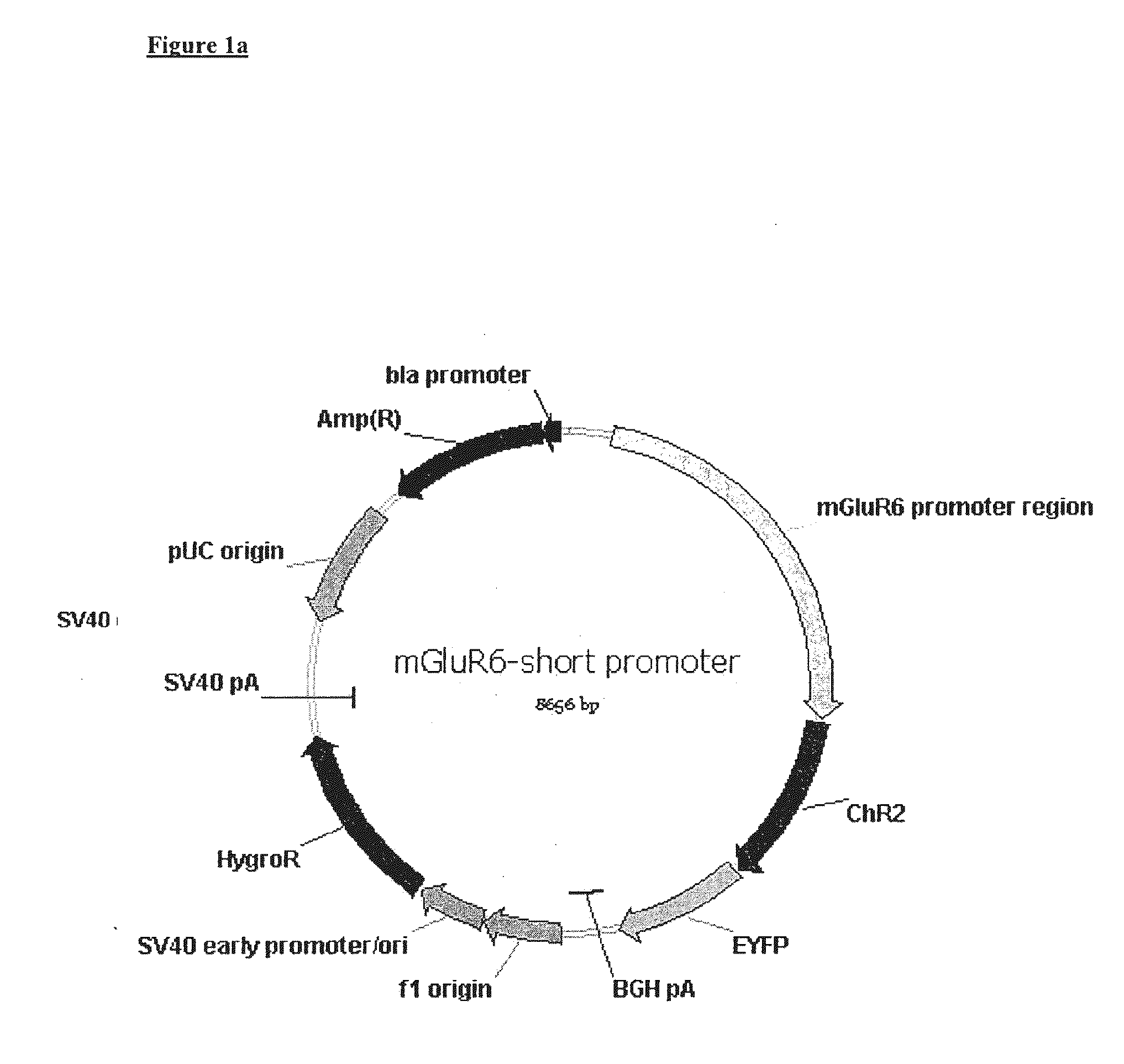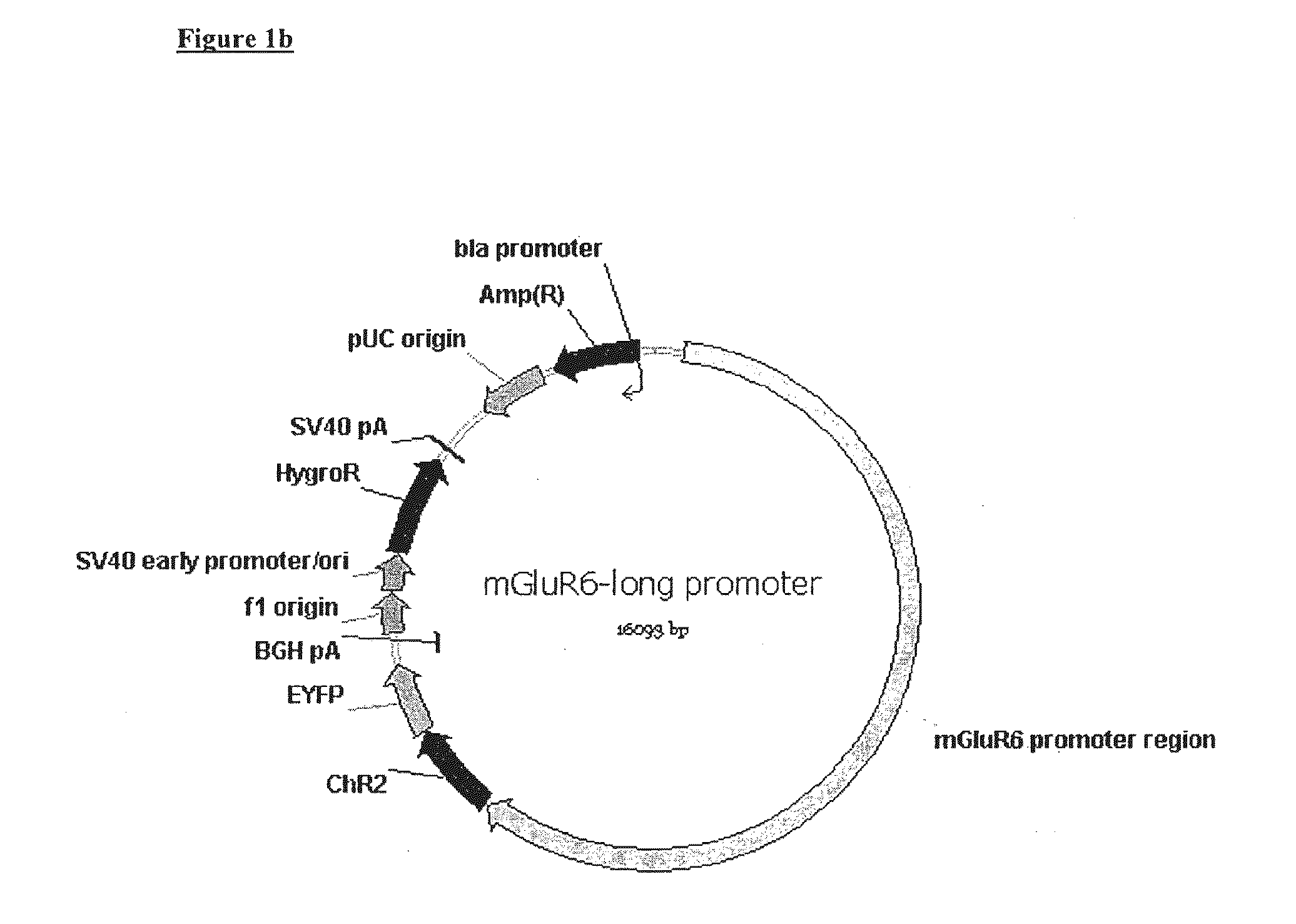Use of Light Sensitive Genes
a technology of light-sensitive genes and genes, applied in the field of blindness treatment, can solve the problems of degeneration of photoreceptors, retinal disfunction, and millions of people's blindness, and achieve the effect of improving vision
- Summary
- Abstract
- Description
- Claims
- Application Information
AI Technical Summary
Benefits of technology
Problems solved by technology
Method used
Image
Examples
Embodiment Construction
[0025]The present invention will now be described by way of example and with reference to the following figure:
[0026]FIGS. 1a &b show schematic maps of constructs for use in the present invention.
Plasmid Preparation
[0027]The metabotropic glutamate receptor 6 (mGluR6) gene is specifically expressed in certain types of bipolar cells, called ON bipolar cells, within the inner retina. These cells mediate responsiveness to a light signal that is relayed by the photoreceptor cells. The regulatory sequences of the mGluR6 gene are responsible for its cell-specific expression. These regulatory sequences or functional fragments or derivatives thereof can be used to direct the production of another gene to make the ON bipolar cells sensitive to light in the absence of functioning photoreceptor cells. Promoter analysis can be used to identify promoter functional fragments and derivatives (McGowen at al. Mol. Vision 1998, 4:2; Bookstein et al. PNAS 1990, 87 (19); 7762-66)
[0028]The expression pla...
PUM
| Property | Measurement | Unit |
|---|---|---|
| photosensitivity | aaaaa | aaaaa |
| electrical voltage | aaaaa | aaaaa |
| voltage | aaaaa | aaaaa |
Abstract
Description
Claims
Application Information
 Login to View More
Login to View More - R&D
- Intellectual Property
- Life Sciences
- Materials
- Tech Scout
- Unparalleled Data Quality
- Higher Quality Content
- 60% Fewer Hallucinations
Browse by: Latest US Patents, China's latest patents, Technical Efficacy Thesaurus, Application Domain, Technology Topic, Popular Technical Reports.
© 2025 PatSnap. All rights reserved.Legal|Privacy policy|Modern Slavery Act Transparency Statement|Sitemap|About US| Contact US: help@patsnap.com


